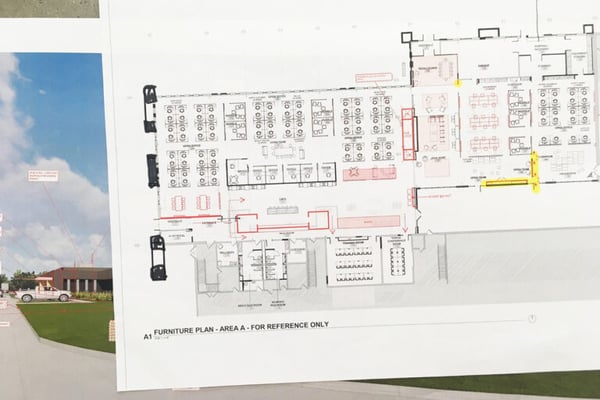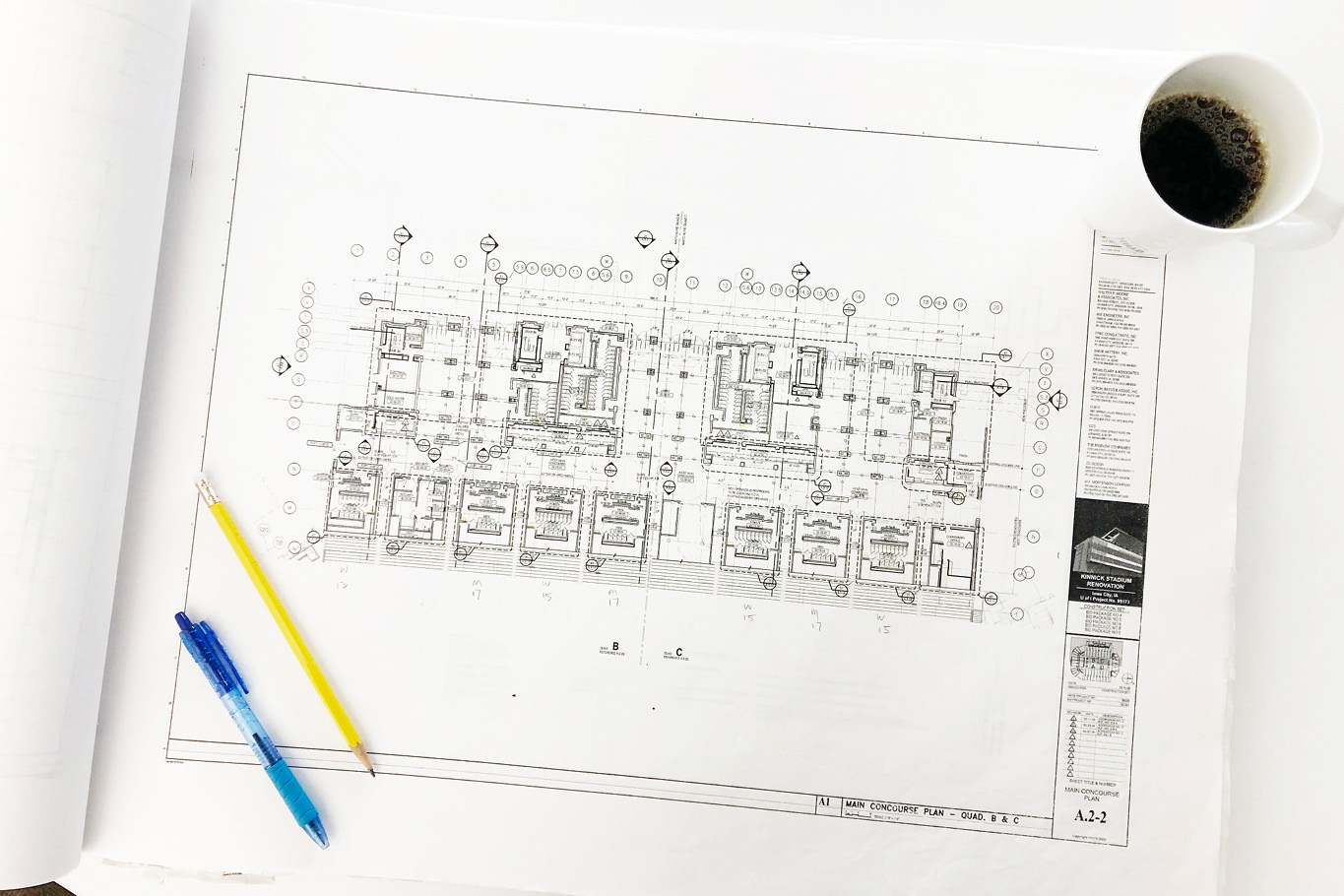You’ve been working closely with your architect for months, exploring concepts, and making design decisions. Suddenly, Design Development ends, and you hear from your architect less frequently.
Don’t worry: your architect hasn’t abandoned your project. You’ve simply reached the Contract Documents phase of the architectural process.
The Contract Documents phase occurs after Design Development and before bidding or construction. This phase is also referred to as “Construction Documents.”
Although client communication is usually less frequent during this phase, your architect is hard at work developing drawings and specifications. These documents explain the scope of the work to the contractor and convey the design intent.
To help you better understand Contract Documents, this article will break down the process and outline expectations for meetings and deliverables. You’ll also learn how you can make the most out of this phase and prepare for construction.
The Contract Documents Process
Throughout Design Development, you will plan almost every detail of your project. Your architect will analyze materials, generate opinions of cost, and present options for everything from mechanical systems to paint colors.
To conclude Design Development, your architect should review the design and provide an updated probable opinion of cost. Feeling confident that you will not need to make changes, you will give your final approval.
Your architect can now document and coordinate the scope of work so the contractor can bid and construct the project.
Drawings and Specifications
Throughout the Contract Documents phase, your architect will create two primary forms of documentation: drawings and specifications.
Drawings outline the design intent, helping the contractor understand how to put the building together. Specifications specify materials, products, and systems.
Ideally, you will finalize the design before the Contract Documents phase begins. Making changes will require your architect to revise drawings and specifications. Since building systems are connected, a change can create a ripple effect through the documents. Your architect will also need to coordinate all changes with any consultants involved.
In short, changing the design during the Contract Documents phase can delay the project’s timeline.
We recommend finalizing all design decisions by the end of Design Development. The early phases of the design process are a time to explore ideas and test options. With no official documentation, the design is malleable.
If you need to make a change during the Contract Documents phase, your architect can adjust course. It is better to make a change during the Contract Documents phase rather than construction when changes are even more time-consuming and costly.

Your architect will create two forms of documentation: drawings and specifications.
Meetings and Deliverables
Throughout Schematic Design and Design Development, you will meet with your architect on a weekly or biweekly basis to discuss the design’s progress and make decisions. In the Contract Documents phase, meetings tend to be less frequent.
Although this phase is less client-facing, your architect should maintain regular communication. The number of meetings will depend on your project, but your architect should regularly update you on their progress and address any questions that arise as documents are finalized.
At your request, your architect can guide you through a final “page turn” where you will review the completed documentation. You may also receive a final probable opinion of cost.
If your project is going out to bid, your architect will discuss the bid notice, ensure you understand the process, and help you prepare documents to announce the time and place of the bid.
Preparing for Construction
During the Contract Documents phase, you will have fewer time commitments with your architect, making it the ideal time to prepare for construction.
Now is the best time to coordinate the day-to-day logistics of the process ahead. If you are planning an addition or expansion, create a communication plan for continuing operations and set expectations with your team. We also recommend communicating when the construction team will be onsite and determining where the “staging area” (a space to lay down materials) will be located.
Lastly, the Contract Documents phase is a great time to plan any aspects of your building you will provide yourself. While your architect can help you determine furniture and IT solutions, some clients prefer to secure these items on their own. Use the Contract Documents phase to plan these aspects of your project and communicate any necessary information with your architect.
What Happens After the Contract Documents Phase?
In the Contract Documents phase, your architect will create drawings and specifications to communicate the design intent to the contractor. You may have fewer meetings with your architect in this phase, making it a great time to plan other aspects of your project and communicate expectations with your team.
To reduce errors, your architect should implement a quality assurance process. At Neumann Monson, we have members of our Quality Assurance team review all documents before they go out to bid. Team members are outside the project team, providing a fresh perspective.
Even with these measures in place, you will likely encounter some errors or omissions in your contract documents. Setting aside a construction contingency can help protect your budget. Learn more by reading about errors and omissions and contingencies.
